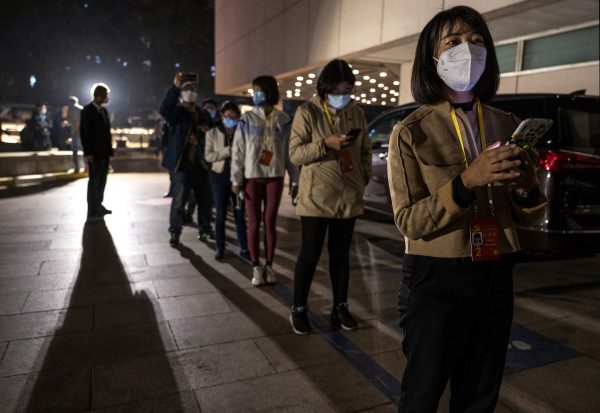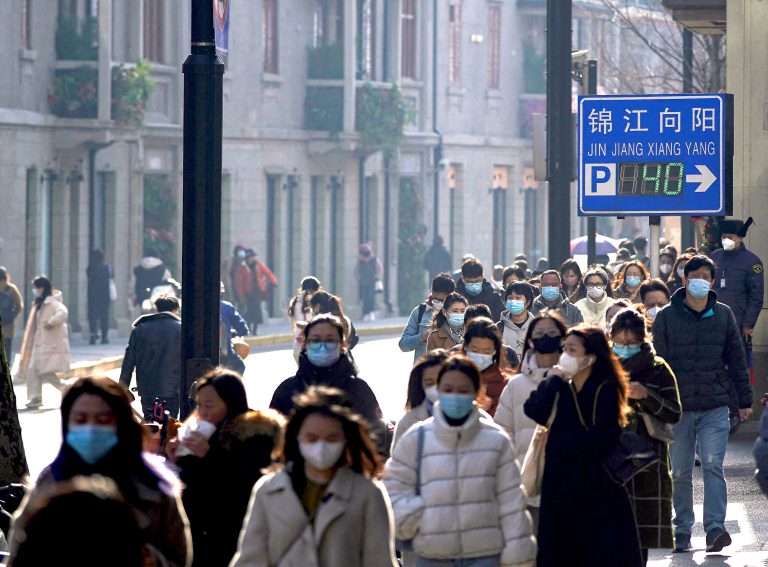By Brenda Goh and Farah Master
SHANGHAI/HONG KONG — Chinese leaders have reportedly delayed a key economic policy meeting amid growing signs that COVID-19 infections are surging nearly a week after Beijing jettisoned some of the world’s toughest restrictions meant to prevent the spread of the virus.
President Xi Jinping and other Politburo members and senior government officials had been expected to attend the closed-door Central Economic Work Conference, most likely this week, to chart a policy course for the embattled Chinese economy in 2023.
A Bloomberg News report on Tuesday night (Dec. 13), citing people familiar with the matter, said the meeting had been delayed and there was no timetable for rescheduling.
Policy insiders and business analysts said the leadership was expected to map out further stimulus steps and discuss keenly anticipated growth targets in the annual three-day session.
Success
You are now signed up for our newsletter
Success
Check your email to complete sign up
The delay came as authorities continued to overturn the previously resolute “zero-COVID” policy championed by Xi.

Long queues are appearing outside fever clinics in a worrying sign that a wave of infections is building, even though official tallies of new cases have dropped in recent weeks as authorities reduce testing.
And companies in China, from e-commerce giant JD.com to cosmetics brand Sephora, are rushing to minimise the impact of surging infections – doling out test kits, encouraging more work from home and, in some cases, procuring truckloads of medicine.
The signs come as China attempts to swiftly align with a world that has largely reopened, following unprecedented popular protests against rigorously enforced mass lockdowns, three years into the pandemic.
The protests were the strongest show of public defiance during Xi’s decade-old presidency and come amid growth figures for China’s $17 trillion economy, the world’s second largest, that were some of the worst in 50 years.
Despite spreading infections, people in China cheered the withdrawal on Tuesday of a state-mandated app used to track whether they had travelled to COVID-stricken areas.
As authorities deactivated the “itinerary code” app at midnight on Monday, China’s four telecoms firms said they would delete users’ data associated with the app.
“Goodbye itinerary code, I hope to never see you again,” said a post on social media platform Weibo, where people cheered the demise of an app that critics feared could be used for mass surveillance of the public.
“The hand that stretched out to exert power during the epidemic should now be pulled back,” wrote another user.
And in a further sign of policy easing, Chinese healthcare company 111.inc has started selling Pfizer’s Paxlovid for COVID-19 treatment in China via its app – medicine previously only available in some hospitals.
It sold out just over half an hour after the listing was reported by local media, according to the platform’s customer service.
For all the relief over last week’s decision to begin dismantling the government’s zero-COVID policy, there are fears that China may now pay a price.

Infections are expected to rise further during the Chinese New Year holiday next month, when people travel across country to be with their families — a risk for a 1.4 billion population that lacks “herd immunity” after prolonged isolation under lockdowns, and has relatively low vaccination rates among the elderly, according to some analysts.
Experts say China’s fragile healthcare system could be quickly overwhelmed if those fears are realised.
The moves made last week to unwind the COVID curbs included dropping mandatory testing prior to many public activities and reining in quarantine.
Prominent Chinese commentator Hu Xijin, a former editor-in-chief of the nationalist state tabloid Global Times, said Beijing was now the epicenter of a rapid new wave of infections but the city had the resources to cope.
“The speed of new infections is really astonishing, and I believe that what we are witnessing here must be one of the most violent virus transmission speeds in the world since the onset of the COVID pandemic,” Hu said.
Hong Kong relaxes
Beijing’s envoy to the United States said on Monday he believes China’s COVID-19 measures will be further relaxed in the near future and international travel to the country will also become easier.
China has all but shut its borders to international travel since the pandemic originated in the central Chinese city Wuhan in late 2019. International flights remain at a fraction of pre-pandemic levels and arrivals face eight days in quarantine.
Financial hub Hong Kong, which already maintains less stringent border controls than mainland China, said on Tuesday it would drop a requirement for incoming travellers to avoid bars and restaurants in the three days after arrival.
Hong Kong will also scrap its mobility-tracking app governing access to restaurants and venues such as gyms, clubs and salons, Chief Executive John Lee said.
While the lifting of controls is expected to brighten the prospects for global growth longer term, analysts say Chinese businesses will struggle in the weeks ahead, as a wave of infections creates staff shortages and makes consumers wary.
China stocks edged lower on Tuesday as a recent rebound triggered by reopening hopes gave way to concerns about spreading infections. The yuan currency was little changed, but it is already set for its worst year since 1994, when China unified the official and market exchange rates.
Reporting by Bernard Orr and Ethan Wang in Beijing, Brenda Goh and Shen Yiming in Shanghai and Farah Master in Hong Kong; writing by John Geddie and Greg Torode; editing by Simon Cameron-Moore, Nick Macfie and Mark Heinrich.












